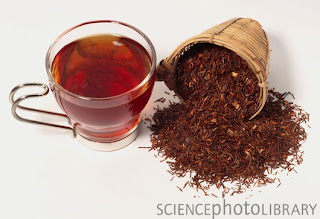It’s certainly starting to feel like winter outside with the temperatures plummeting in recent weeks! The cold weather can have some unfortunate consequences for people with joint and muscle aches, with studies showing that sufferers of conditions such as osteoarthritis, rheumatic disease and muscular pain report a correlation between cold temperatures and days on which they feel more painful symptoms. Explanations could come from the fact that things such as blood flow to muscles and lubricating fluids within the joints are reduced by the cold - also when we feel cold we tighten everything up out of discomfort, which can lead to aches and pains worsening.
One way that we can treat these kinds of aches and pains at The Chandos Clinic is by using medical acupuncture. One of our osteopaths, Max Hopes, is trained in acupuncture and uses the method alongside conventional osteopathy. He finds that the two approaches complement each other perfectly, and a treatment session with him will often consist of a combination of the two – dependent on the suitability of the complaint and the preference of the patient.
What is acupuncture?
Fine needles are inserted into specific points that the practitioner identifies as relevant to the patient's condition based on a medical diagnosis. At our clinic, this may be used in addition to a more 'standard' osteopathic treatment.
The number of needles used can range from just one, up to eight or ten, but this depends on the condition and the patient’s comfort. The amount of time that needles are left in place also varies; it can be from just a few seconds, up to about fifteen minutes.
Proven benefits
In recent years, more and more scientific evidence has come out in support of acupuncture and a number of benefits have been shown:
- Pain relief - Acupuncture can be very effective in the relief of pain by stimulating the release of natural painkillers such as endorphins and serotonin
- Nerve stimulation - Acupuncture has been proven to stimulate nerves around the area that the needles are placed. This can add to the pain relieving effect as well as helping to restore 'normal' function in areas that are supplied by those nerves
- Promotion of blood flow - Studies have shown that acupuncture can be used to encourage greater blood supply to an injured site. This is particularly useful for slow healing injuries as providing more blood to the region accelerates the healing process.
- Releasing tight muscles and 'trigger points' - These are tight 'knots' in muscles that can be a source of pain. Acupuncture is a highly effective and relatively pain-free method of releasing these points, which can make a huge difference for many patients.
What conditions can acupuncture treat?
Acupuncture is proven to be effective in many musculoskeletal conditions such as:
- Low back and neck pain
- Arthritic pain
- Joint and muscle injuries
- Tendon and ligament problems
- Headaches
- Trapped nerves
Does it hurt and is it safe?
Acupuncture is rarely painful as the needle is so fine that it penetrates the skin with ease, it doesn’t feel like having an injection! What you may experience is a slight dull ache or a twitch in the muscle. This is generally a good sign as it shows that the needle is having an effect.
Acupuncture is a safe treatment when administered by highly trained practitioners such as ours at The Chandos Clinic. Serious adverse events are almost unheard of, however occasionally patients may feel tired or faint with the use of needles.
Max works at the Chandos Clinic Tuesdays and alternate Fridays and Saturdays





















